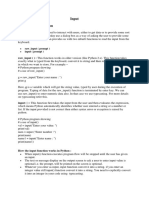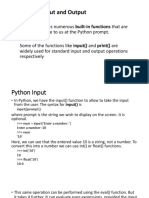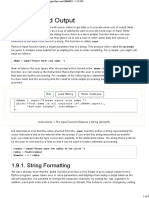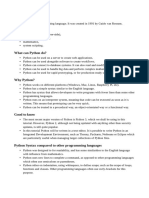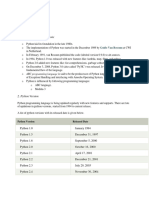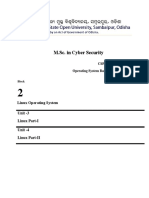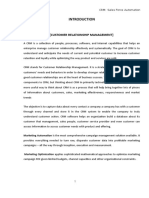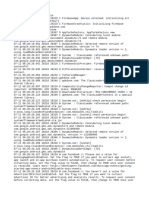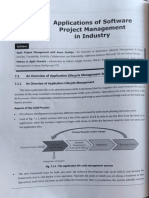0% found this document useful (0 votes)
5 views6 pagesInput and Output in Python
This document provides a comprehensive overview of Python's input/output operations and string formatting techniques. It covers the print() and input() functions, including their parameters and usage, as well as various string formatting methods such as f-strings, str.format(), and %-formatting. The guide emphasizes best practices and comparisons between formatting methods to aid in effective programming.
Uploaded by
raghuveera97nCopyright
© © All Rights Reserved
We take content rights seriously. If you suspect this is your content, claim it here.
Available Formats
Download as PDF, TXT or read online on Scribd
0% found this document useful (0 votes)
5 views6 pagesInput and Output in Python
This document provides a comprehensive overview of Python's input/output operations and string formatting techniques. It covers the print() and input() functions, including their parameters and usage, as well as various string formatting methods such as f-strings, str.format(), and %-formatting. The guide emphasizes best practices and comparisons between formatting methods to aid in effective programming.
Uploaded by
raghuveera97nCopyright
© © All Rights Reserved
We take content rights seriously. If you suspect this is your content, claim it here.
Available Formats
Download as PDF, TXT or read online on Scribd
/ 6


